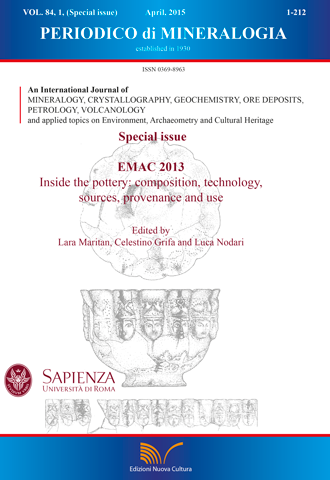Organic residues analysis of Late Antique pottery from Plaça Major-Horts de Can Torras (Castellar del Vallés, Catalonia)
DOI:
https://doi.org/10.2451/2015PM0008Keywords:
organic residue analyses, food practices, gas chromatography-mass spectrometry, Late Antiquity, Catalonia.Abstract
Organic residues analysis is an important tool in archaeological research because it sheds light on aspects of the daily life of the past. In particular, it allows us to obtain information on food production, consumption and trade. In this paper we present the results of residue analysis performed on ceramic vessels from the archaeological site of Plaça Major-Horts de Can Torras (Castellar del Vallés, Barcelona, Spain), a long lasting site, of which we studied the Late Antique occupation. The site is a rural settlement located in the northeast of Catalonia and it was characterized by structures made of perishable material and by the presence of silos, above which probably the living structures were placed.
Analyses were carried out on twelve cooking and storage ceramic forms that were the most representative of the Late Antique phase. In particular pots, jugs, pans and dolia were analyzed, in order to investigate the food consumed at the site. Analyses were conducted by gas chromatography-mass spectrometry (GC-MS). The results show the cooking of animal and vegetal products in the cooking vessels (pots and pan) and the storage of wine in the dolia. Pinaceae products are particularly abundant in some vessels, which suggests the use of this substance at the site. In general, the analyses carried out provide the first case study of residue analysis of ceramic material of this period in Catalonia and allowed us to recover information both on food habits and on the use of different ceramic forms during Late Antiquity in this area.


